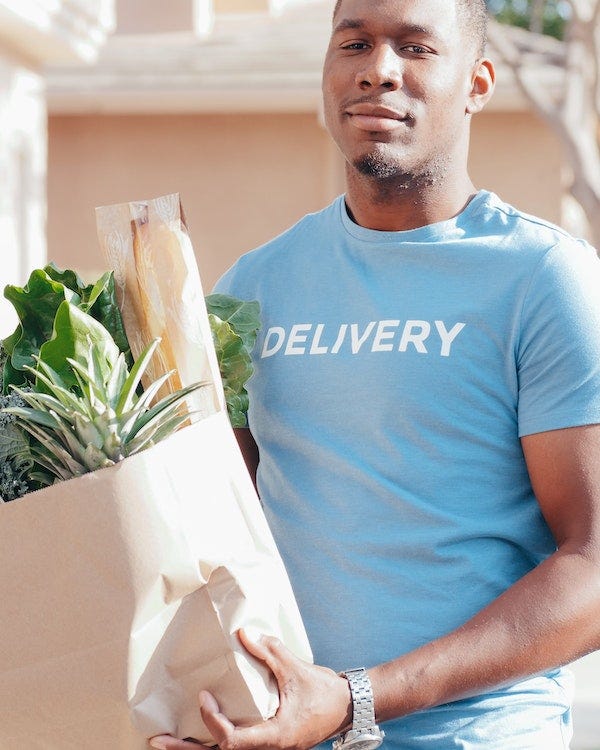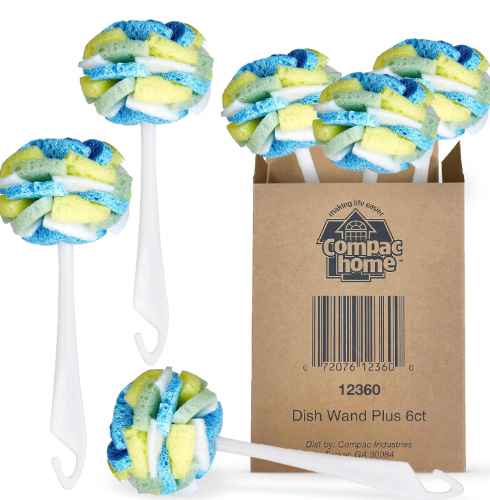Can goPuff rival other grocery delivery services?

Unless you wanted to brave your way in a retail store to fight over toilet paper, hand sanitizer, alcohol and cleaning supplies throughout 2020, chances are you opted for a grocery delivery app service. In March 2020 alone, first-time online grocery shoppers ages 60 and up did so for the first time at 39%.
While nonessential businesses such as restaurants and movie theaters continue to re-open in 2021, grocery stores and grocery delivery workers have fought the good fight for more than a year of social isolation and coronavirus scares. And the customers have not stopped.
Online shoppers now have a host of companies to choose from to deliver their groceries. Whole Foods Market customers choose Amazon Prime delivery. Target shoppers choose Shipt. Mariano’s and Food 4 Less have Instacart. And although Skipcart and Walmart are parting ways, Walmart has also worked with Postmates, DoorDash, Roadie and Point Pickup.
In 2021, people are increasingly getting ahold of the coronavirus vaccine and less timid about mingling again. Brick and mortar enthusiasts are also heading back into grocery stores in larger numbers. So how did newer grocery delivery companies like goPuff manage to become so quietly successful during the pandemic and with all of its other more popular competitors?
In a recent press release, goPuff secured $1.15 billion in new funding, more than doubling its valuation to $8.9 billion in just five months. Some of its investors include Baillie Gifford, D1 Capital Partners, Eldridge, Fidelity Management and Research Company, Luxor Capital, Reinvent Capital, and SoftBank Vision Fund 1.
ADVERTISEMENT ~ Amazon
As an Amazon affiliate, I earn a percentage from purchases with my referral links. I know some consumers are choosing to boycott Amazon for its DEI removal. However, after thinking about this thoroughly, I want to continue promoting cool products from small businesses, women-owned businesses and (specifically) Black-owned businesses who still feature their items on Amazon. As of the first date of Black History Month 2025, each new post will ALWAYS include a MINIMUM of one product sold by a Black-owned business. (I have visited the seller’s official site to verify that Amazon Black-owned logo.) I am (slowly) doing this with older, popular posts too. If you still choose to boycott, I 100% respect that decision.

The delivery service app provides customers with a little of everything, including cleaning and home products, pet supplies, baby products, over-the-counter medications, food and drinks. While the other grocery and retail stores mentioned above provide these supplies, there are three major differences between them and goPuff.
goPuff charges a flat rate of $1.95 for delivery for a $10.95 minimum subtotal, which is far less than the average $9-$10 onetime fees (not including tips) from other grocery delivery companies. (The long-term deal may be better for online consumers who decide to pay the annual membership rates of $99 to $119 for unlimited deliveries with companies like Shipt and Amazon Prime though.)
goPuff is open 24 hours and seven days per week in many cities, which comes in handy for late-night needs. (Other grocery delivery companies have a cut-off in the early evening hours but can have scheduled deliveries in the early a.m. hours the following day.)
goPuff has their available items in their own facilities instead of relying on individual grocery store runs. They store more than 2,500 products. Their motto is “Order in seconds, delivered in minutes” for that reason; they’ve skipped the courier model altogether.
What is the appeal of grocery shopping in person versus online?
For coupon cutters and sticklers for online sales, not getting an in-store promotion is a deal-breaker. They’d rather do curbside pickup or get it themselves. And online grocery delivery apps do not often honor coupons, give or take mobile apps that already come with their own promotional options (ex. Food 4 Less coupons with Instacart). With companies like goPuff, there is no in-store deal. The price is the price no matter what, and there is no haggling for competitor rates.
Also, while delivery services like Amazon Prime will deliver alcohol from retail stores like Whole Foods Market, Shipt does not offer alcohol delivery at all. (Amazon Prime delivery reps will be required to scan the customer’s license so there is no leave-at-door option for these purchases.)
Instacart can deliver alcohol, depending on the state and the store availability. Meanwhile, goPuff has an entire page full of liquor options for delivery.
The highs and lows of goPuff
The newer delivery service is not doing too shabby when it comes to customer satisfaction either. Out of 29,413 total reviews (at the time of this publication) and more than 1 million downloads of goPuff, majority of the reviews are five stars. Lower-rated reviews are from customers who report that the pricing used to be cheaper when the company was less popular, there’s a continuous habit of $5 credits and last-minute cancellations, and goPuff consistently has out-of-stock items.
During their seven years in business, the mobile app delivery service now has 250-plus micro-fulfillment centers in more than 650 cities. With 7,000 employees and counting, their popularity continues to rise. So it was almost certain that there would be a boost in complaints about the need for more drivers, and mobile app users are waiting long(er) hours for items to arrive the same day.
Will mobile apps like goPuff rival those from grocery stores, an industry that is already equipped to handle inventory shortages and has prices set in stone? Only time, company growth and e-commerce demand can answer that.
Prior to the pandemic, Business Insider predicted the U.S. food and beverage retail e-commerce sales were expected to total almost $24 billion in 2020 and surpass $38 billion in 2023. Now they’re predicting online grocery adoption will reach 55% in the U.S. by the end of 2024.
While no one could predict how the grocery store industry and mobile app delivery services would be affected by this worldwide health outbreak, customers’ memories are long. Even after the COVID-19 vaccine is more accessible, many yearlong social isolators could still prefer the convenience of online grocery shopping after a year of doing it.
Editor’s Note: (Note: This post was originally written for an Upwork client via now-defunct GoalsTV. However, updates and tweaks have been made.)
Did you enjoy this post? You’re also welcome to check out my Substack columns “Black Girl In a Doggone World,” “BlackTechLogy,” “Homegrown Tales,” “I Do See Color,” “One Black Woman’s Vote” and “Window Shopping” too. Subscribe to this newsletter for the monthly post on the third Thursday.
If you’re not ready to subscribe but want to support my writing, you’re welcome to tip me for this post! I’ll buy a dark hot chocolate on you. Thanks for reading!




